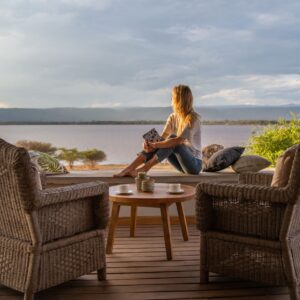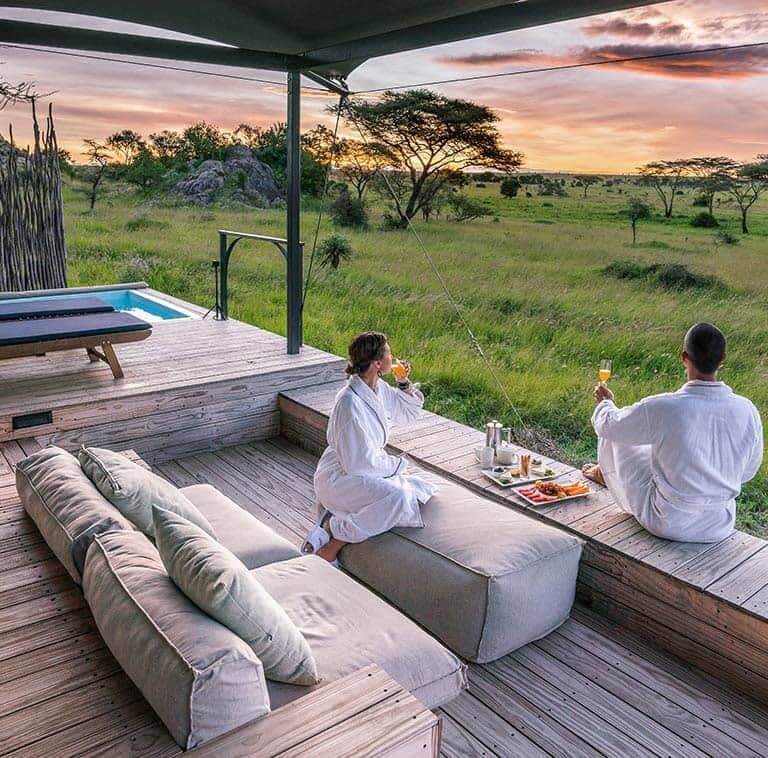Best Time to Climb Kilimanjaro Month by Month.
Discover the best time to climb Kilimanjaro for an unforgettable experience. Learn about the ideal seasons, weather conditions, and tips for a successful trek. Get expert insights and first-hand knowledge from seasoned climbers.
Kilimanjaro, the majestic African peak, stands tall as the highest freestanding mountain in the world. Climbing this iconic summit is a dream for many adventurers seeking a thrilling challenge and breathtaking views.
However, deciding on the best time to embark on this expedition is crucial for a safe and enjoyable climb. In this comprehensive guide, we will explore the optimal periods to conquer Kilimanjaro, considering factors like weather, visibility, and crowds.
Whether you’re a seasoned mountaineer or a first-time trekker, this article will equip you with all the information needed to plan your Kilimanjaro adventure.
The “Best Time to Climb Kilimanjaro” primarily depends on two distinct trekking seasons, each offering unique advantages. Let’s delve into each season to determine which one suits your preferences and requirements.
1. Climbing Mount Kilimanjaro in January, February to March
Climbing Mount Kilimanjaro is a dream for many adventurers around the world. The allure of conquering Africa’s highest peak and being surrounded by awe-inspiring landscapes is truly irresistible. If you’re considering taking on this remarkable challenge, there’s no better time than January, February, or March. During these months, Kilimanjaro offers a unique and unforgettable experience, with clear skies, moderate temperatures, and stunning views. In this comprehensive guide, we’ll delve into every aspect of climbing Mount Kilimanjaro in January, February to March, providing you with valuable insights, practical tips, and personal experiences to ensure your journey is a resounding success.
2. Climbing Kilimanjaro in April: Beauty and Beast
Not ideal, but doable for experienced adventurers. Expect drenching rain, muddy trails, and limited views. Temperatures plummet at higher altitudes, demanding robust cold-weather gear. The upside? Fewer crowds and potentially snow-capped peak photos. Choose the Rongai Route for drier conditions. Be prepared for a challenging, wet, and breathtaking adventure.
April on Mount Kilimanjaro brings transitioning weather with cool temperatures. Days range from 10 to 20°C (50-68°F), while nights can drop to 0°C (32°F). Despite occasional showers, April offers clearer skies, providing breathtaking views. The cooler climate and reduced crowds make it an ideal time for a memorable Kilimanjaro climb.
3.Climbing Kilimanjaro in Dry Season (June to October)
The Dry Season is considered the best time to climb Kilimanjaro for most climbers. This period provides stable weather conditions and excellent visibility, enhancing your chances of reaching the summit. Here’s why the Dry Season is favored:
Favorable Weather: During the Dry Season, Kilimanjaro experiences clear skies and minimal precipitation. This reduces the risk of rain and snow, ensuring a more comfortable and safer ascent.
Ideal Visibility: The absence of heavy clouds and fog grants trekkers stunning panoramic views of the surrounding landscapes throughout the climb.
Lower Risk of Altitude Sickness: The stable weather and lower humidity levels reduce the chances of altitude-related health issues, allowing climbers to acclimatize more effectively.
We generally advise that the best time to climb Kilimanjaro is during the warmest and driest times of year, from December to mid-March and mid-June to the end of October. However, although these are considered to be the best times to climb the mountain in terms of weather, they are also the busiest months.
4. Climbing Kilimanjaro in Wet Season (November to May)
The Wet Season is less popular for climbing Kilimanjaro due to its challenging weather conditions. However, it can still be a viable option for certain trekkers with specific preferences. Here are some aspects to consider during the Wet Season:
Lush Scenery: The Wet Season brings rain, transforming the mountain’s landscapes into a lush, green paradise. Nature enthusiasts and photographers might appreciate the vibrant scenery.
Fewer Crowds: As the number of climbers decreases during this period, you can enjoy a quieter and more serene trek up the mountain.
Off-Peak Rates: Some tour operators and accommodations offer discounted rates during the Wet Season, making it a budget-friendly option for adventurers.
5. Climbing Kilimanjaro in July
Although extreme weather conditions – subzero nocturnal temperatures and chill winds – are a likelihood at higher altitudes, July is a relatively dry and warm month and a perfect time to climb Kilimanjaro. Is July a good time to climb Kilimanjaro? A combination of the best weather and the US and Europe summer vacations means this is the main climbing season and the busiest time on the mountain. July and August are the most popular months, so if you want to try and avoid crowds, opt for June or September, or October if you don’t mind a bit of rain.
6. Climbing Kilimanjaro in August
Still, assuming climatic conditions are your main consideration, August is probably the driest and warmest month and ideal for climbing Kilimanjaro. Shira Plateau on Mount Kilimanjaro. However, as summer holidays in the northern hemisphere are in full flow, it is also usually one of the two busiest months.
A combination of the best weather and the US and Europe summer vacations means this is the main climbing season and the busiest time on the mountain. July and August are the most popular months, so if you want to try and avoid crowds, opt for June or September, or October if you don’t mind a bit of rain.
7. Climbing Kilimanjaro in September
Is September a good month to climb Kilimanjaro? The summit success rate is very low for climbing Kilimanjaro as only 50-60% of people make it to the summit each year. September is one of the busier times to climb Kilimanjaro, but great weather, dryer conditions and excellent mountain views make this a great month to climb. Dry and relatively warm weather can be expected, making September ideal for climbing Kilimanjaro in climatic terms. However, extreme cold and possibly high winds are normal in the alpine and arctic zones. Dawn on the Mweka route, Mount Kilimanjaro.
8. Climbing Kilimanjaro in December
December tends to be wet and very cold. Expect slippery trails at lower altitudes and, as you approach the summit, subzero temperatures and howling winds at night. Towards the end of the month, the mountain experiences a secondary high season associated with the Christmas and New Year holidays. Best avoided.
Is December a good time to hike Kilimanjaro? Late December, January, February and March are great months for climbing Kilimanjaro. For starters, while there’s some rain during this season, it’s not extreme.
This is one of the common questions asked by many visitors planning their Africa safari tour during the December-Christmas season. It is a simple question to respond to, and the answers are YES, it is possible to climb Mount Kilimanjaro in December.
Factors to Consider for Choosing the Best Time
Deciding between the Dry Season and the Wet Season isn’t the only consideration when planning your Kilimanjaro climb. Several other factors should be taken into account to ensure a successful and enjoyable experience:
Personal Fitness and Experience
Climbing Kilimanjaro is a demanding physical challenge. Assess your fitness level and mountaineering experience before choosing the best time for your climb. The Dry Season might be more suitable for first-time climbers, while experienced trekkers might prefer the unique allure of the Wet Season.
Temperature and Weather
Weather conditions significantly impact your Kilimanjaro climb. The Dry Season offers cooler temperatures, especially at higher altitudes, which can be more comfortable during strenuous hikes. The Wet Season, on the other hand, brings warmer temperatures but increased chances of rain.
Wildlife Encounters
For wildlife enthusiasts, the Wet Season offers the opportunity to spot diverse flora and fauna. The lush surroundings attract various animal species, adding an extra dimension to your adventure.
Climbing Routes
Different climbing routes present varying challenges and scenic beauty. Some routes are more suitable for specific seasons, so consider your preferred route when deciding on the best time.
Packing Essentials for a Kilimanjaro Climb
Regardless of the time you choose to climb Kilimanjaro, packing the right gear is essential to ensure your safety and comfort throughout the journey. Here’s a comprehensive list of packing essentials:
Quality Hiking Boots:
Invest in sturdy, waterproof hiking boots to protect your feet and provide excellent traction on rugged terrain.
Layered Clothing:
Dress in layers to adapt to changing temperatures during the climb. Include moisture-wicking base layers, insulating mid-layers, and waterproof outer shells.
Sleeping Bag and Pad:
A high-quality, cold-rated sleeping bag and pad are essential for a comfortable night’s rest during the trek.
Headlamp: A reliable headlamp is crucial for early morning and nighttime treks.
Sun Protection:
Bring sunglasses, a wide-brimmed hat, and sunscreen to shield yourself from the sun’s harsh rays at high altitudes.
Water and Snacks:
Stay hydrated with a refillable water bottle and pack energizing snacks to fuel your journey.
First Aid Kit:
Carry a well-stocked first aid kit, including altitude sickness medication, bandages, and pain relievers.
Personal Items:
Don’t forget essentials like passports, permits, and camera gear to capture your Kilimanjaro adventure.
Add on: Batteries and Portable Chargers on Kilimanjaro
Batteries: On Kilimanjaro, the cold and high altitude can drain batteries quickly. Bring extra batteries for essential devices like headlamps and cameras, and store them in a warm place, such as inside your sleeping bag. Lithium batteries perform better in cold temperatures than alkaline ones, making them a reliable choice for your climb.
Portable Chargers: Portable chargers are essential on Kilimanjaro to keep your devices powered throughout the trek. Opt for high-capacity power banks, preferably solar-powered, as they can recharge during the day. Ensure your portable charger is fully charged before starting the climb.
What is the Best Time to Climb Kilimanjaro for Beginners?
The Dry Season (June to October) is ideal for beginners due to its stable weather and lower risk of altitude sickness.
Is Climbing Kilimanjaro Dangerous during the Wet Season?
Climbing during the Wet Season can be more challenging due to rain and slippery trails. However, with proper preparation and experienced guides, it can still be a safe and rewarding experience.
How Cold Does it Get at the Summit of Kilimanjaro?
Temperatures at the summit can drop to as low as -20°C (-4°F) during the Dry Season. Proper clothing is crucial to stay warm.
How Long Does it Take to Climb Kilimanjaro?
The duration of the climb depends on the route chosen, but most treks take between 6 to 8 days.
Can I Climb Kilimanjaro Solo?
While it’s possible, climbing with a reputable tour operator and a group is recommended for safety and support.
Do I Need Climbing Experience to Climb Kilimanjaro?
While prior climbing experience is beneficial, it’s not mandatory. Choose a suitable route and prepare physically to increase your chances of success.
Conclusion
Climbing Kilimanjaro is a life-changing experience that requires careful planning and consideration. Understanding the best time to climb Kilimanjaro, based on your preferences and capabilities, is essential for a successful and enjoyable adventure. Whether you choose the stable weather of the Dry Season or the lush landscapes of the Wet Season, Kilimanjaro promises an unforgettable journey to the Roof of Africa.
So, pack your gear, train your body, and embark on this extraordinary expedition. Conquer Kilimanjaro and create memories that will last a lifetime.








